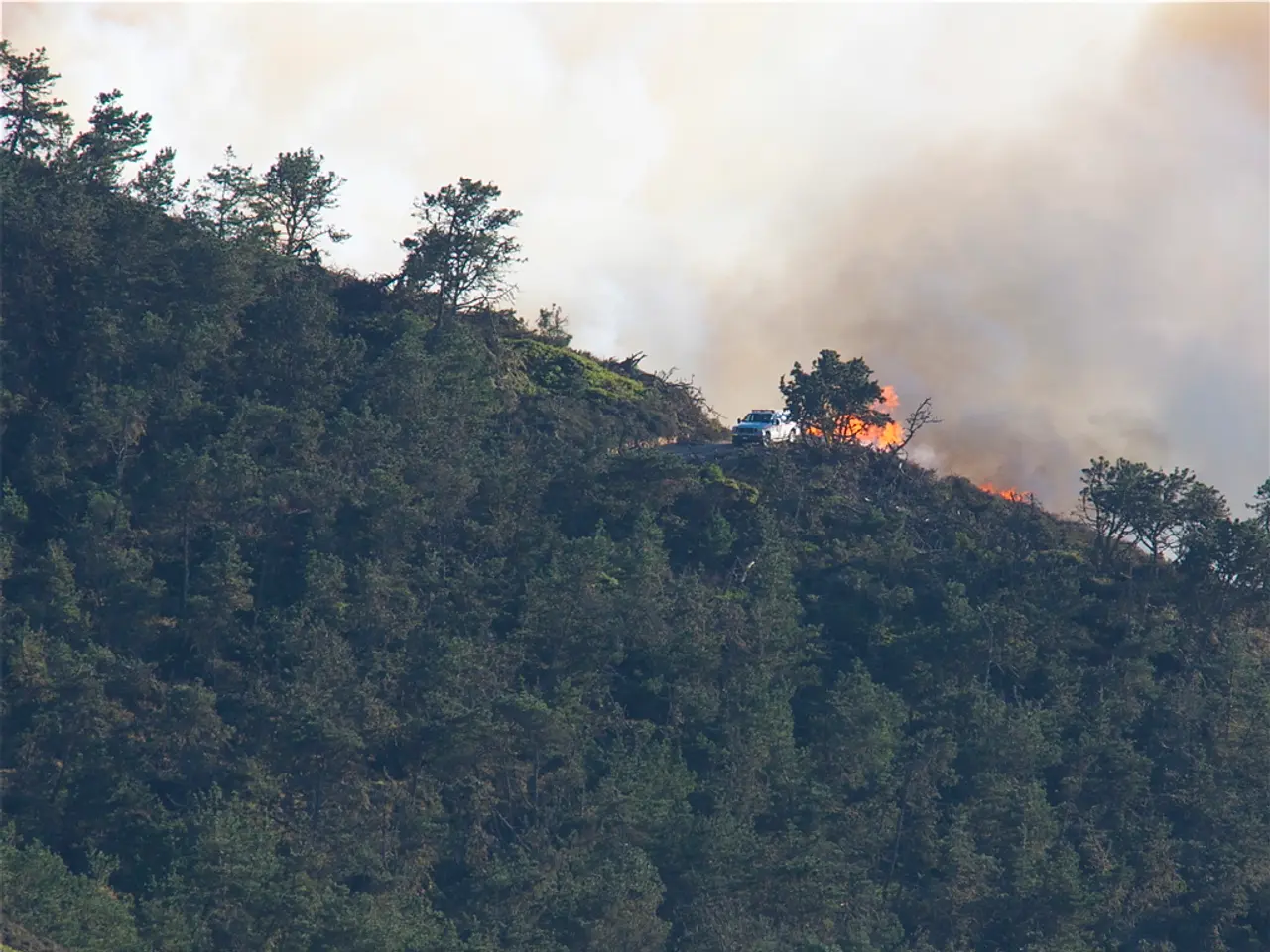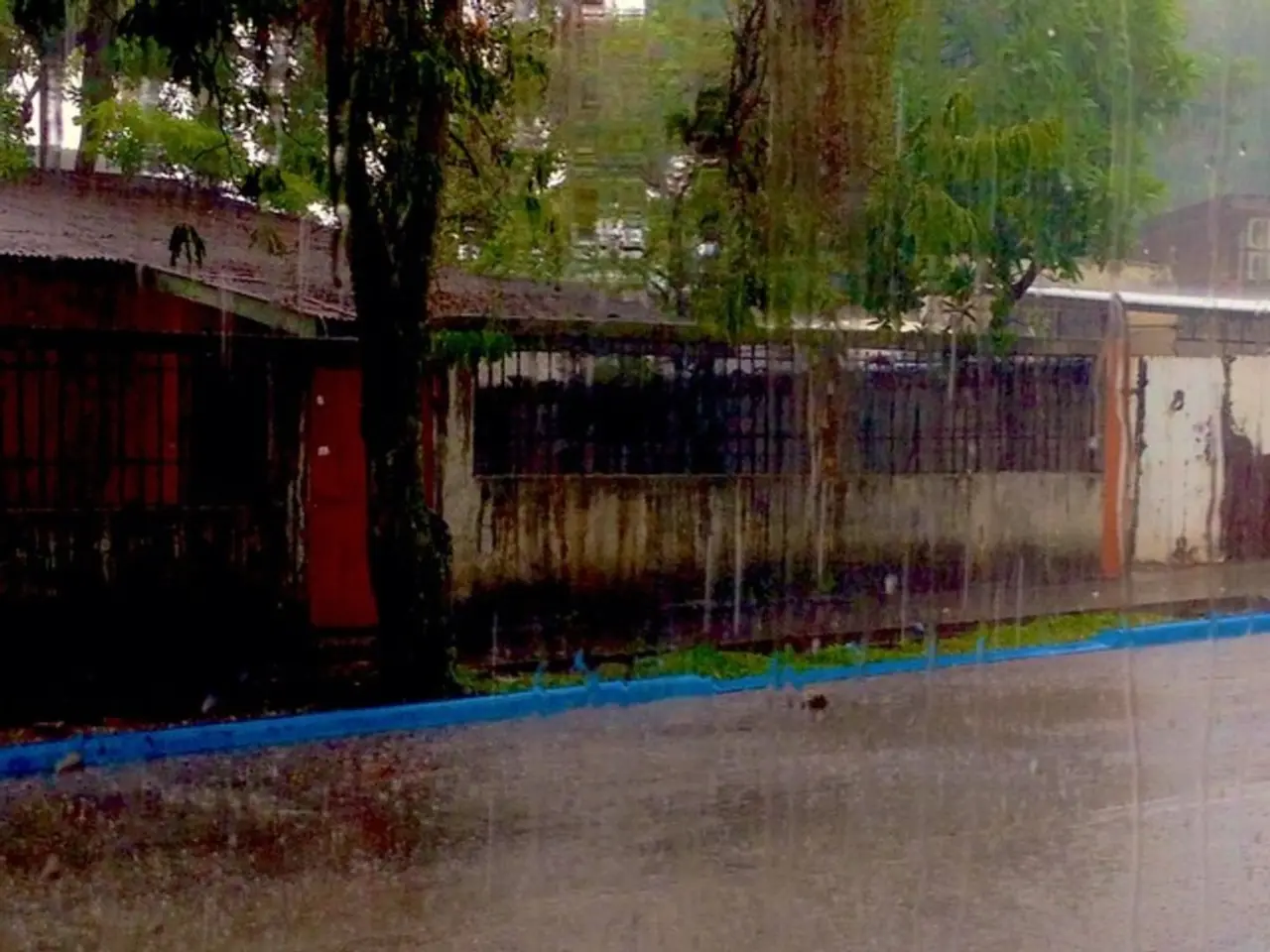Wildfires burning in Canada disseminate polluted air across extensive regions in the Midwest, negatively impacting air quality.
The Midwestern United States is currently experiencing a wave of smoky skies and poor air quality, caused by wildfires burning in Canada. The Associated Press's environmental coverage provides updates on this ongoing situation, which can be found at https://apnews.com/hub/climate-and-environment.
The air quality in several states, including Iowa, Minnesota, Wisconsin, Michigan, eastern Nebraska, parts of Indiana, and Illinois, has been affected by the wildfire smoke. According to the Air Quality Index (AQI), parts of Minnesota have exceeded 150, a level that the Environmental Protection Agency's (EPA) AQI system classifies as bad for everyone.
Health officials advise sensitive groups, such as people with heart or lung diseases, asthma, older adults, children, pregnant women, and sensitive individuals, to limit outdoor activities and reduce exposure to smoke. Some areas have issued statewide air quality alerts, with smoky conditions expected to persist for up to a week due to the ongoing Canadian wildfires.
Cities like Minneapolis have been ranked among the most polluted in the US due to smoke intrusion. The city has some of the worst air pollution in the world since Friday, according to the Switzerland-based air quality monitoring database IQAir.
To mitigate the effects of poor air quality, health authorities recommend avoiding burning things that could make the air pollution worse and keeping windows and doors closed to keep the smoke out. They also advise following local air quality alerts and health advisories until smoke levels improve.
The smoky skies are expected to persist for much of the day, with the air quality forecast indicating widespread smoky conditions and poor air quality, particularly in northern Minnesota, Wisconsin, and the Upper Peninsula of Michigan. Other parts of the Midwest and some Great Lakes and Northeastern areas may experience hazy skies and elevated pollution levels through at least Tuesday, August 5, 2025.
In summary, sensitive groups in the Midwestern states should minimize outdoor exertion, stay indoors as much as possible, use air purifiers if available, and follow local air quality alerts and health advisories until smoke levels improve. The situation remains dynamic, with smoke dispersal expected to slowly improve but air quality impacts continuing through Tuesday or longer in some regions.
[1] Associated Press
[2] CBS News
[3] The Weather Network
- The Associated Press's coverage on the wildfires in Canada and its impact on the Midwestern United States, including air quality, is available at https://apnews.com/hub/climate-and-environment.
- The ongoing Canadian wildfires are causing issues in the environmental science sphere, with the wildfire smoke affecting several states and populations, such as Minneapolis, which has found itself among the most polluted cities in the US.
- As wildfires rage in Canada, the climate and politics of the Midwest are being affected, involving discussions about the environment and the weather, with some cities enduring unhealthy air quality levels for extended periods.
- In recent days, Seattle has been monitoring weather conditions closely due to the spreading wildfire smoke from Canada, with concerns over potential impact on its local environment and climate.
- The science community is keeping a close eye on the long-term implications of the current wildfire event, linking it to climate change, its effects on the environment, and forecasting possible future occurrences and meteorological patterns.








